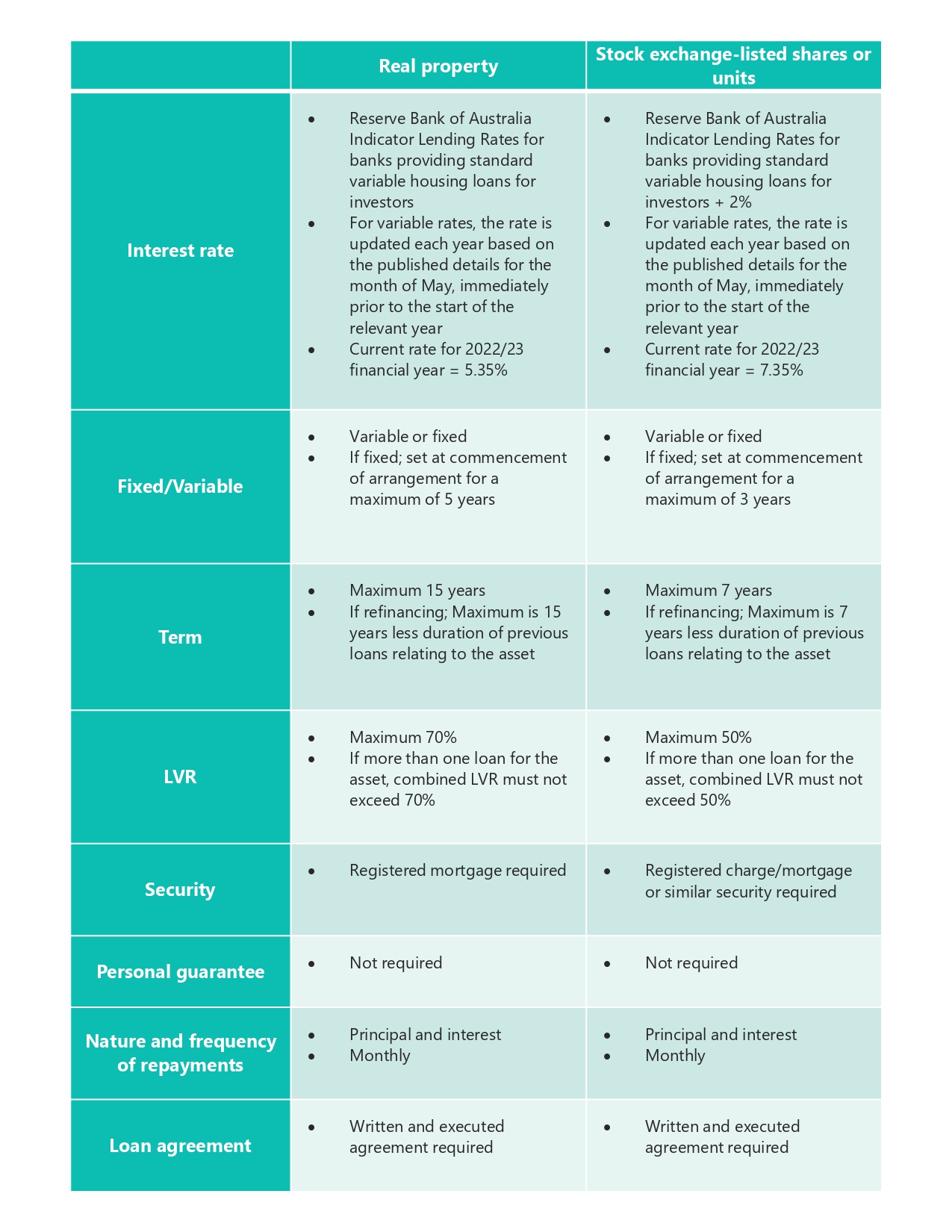

The concept of superannuation funds, in particular SMSFs, being able to borrow has been around for a number of years now. For just as long, borrowing via related party entities has been part of the landscape.
In the early days we saw all manner of terms and conditions when it came to such loans; from 100% Loan to Value Ratios (LVR), to nil interest rates and a single principal repayment on maturity of the loan or sale of the underlying asset, which ever came first. Combinations of the above and any other measures trustees could dream up were also not uncommon.
Some of these terms and conditions were even sanctioned by the ATO in the form of private binding rulings (PBR). This free-for-all approach was never going to last and eventually the ATO looked to put a stop to it and issued Practical Compliance Guidelines 2016/5, a.k.a. PCG 2016/5 in early 2016. Subsequent updates occurred in late 2016 and then early 2022.
These guidelines are often referred to as the ‘safe harbour provisions’. PCG 2016/5 looks to set standard terms and conditions for arrangements not involving commercial lenders, that when adhered to, would result in the ATO taking the view the agreement is on an arm’s length basis.
In most cases, these non-commercial lending arrangements were with related parties. There is no legal requirement to adhere to the guidelines. They remain just that, guidelines, not law.
It is not to say that falling outside of the safe harbour terms and conditions would automatically result in a non-arm’s length arrangement, but the onus is then on the trustees of the SMSF to prove the loan is on commercial terms.
It is the ATO’s view that simply replicating the basic terms you may find on a commercial lender’s website does not constitute replicating a commercial arrangement. You pretty much need to go through the whole process of applying for a loan and have the lender put an offer in front of you to know on what terms and conditions a third party would lend to you. If you can’t get an offer from a commercial lender, then it’s arguable you will not be able to lend to the fund on commercial terms outside of the safe harbour provisions. The argument being, if commercial lenders will not lend to you, that is the commercial reality of the situation and anything outside of that is not commercial. The complications associated with being able to prove commercial terms, generally leads people to the path of least resistance and comfort of the safe harbour provisions.
Having an arrangement on commercial terms is important to avoid the 45% tax impost associated with non-arm’s length income (NALI). The concept of non-arm’s length expenditure (NALE), that can lead to NALI, has been topical for a few years now. Many believe PCG 2016/5 dealt with the concerns the NALE provisions were trying to solve, but I digress.
The below table is a snapshot of the terms and conditions set out in PCG 2016/5.

PCG 2016/5 only covers properties and listed shares/units. The ATO have stated the safe harbour provisions should not be relied upon for other assets i.e., unlisted shares, and it is the trustee’s responsibility to substantiate terms and conditions on other assets are commercial.
Further information can also be found in the ATO’s frequently asked questions document here.
You will notice the above table references the variable interest rate is determined each year based on the published details for the month of May. With 12 interest rate hikes since May 2022, it should come as no surprise that the interest rate for the 2023/24 financial year will be greater than what it is for the 2022/23 financial year.
What may have caught some people off guard is the extent of the increase. For the 2023/24 financial year the safe harbour interest rate for property will be 8.85% and 10.85% for listed shares and units.
Trustees will need to review their payment schedules and update them to incorporate the new rate from July 2023. For those with a fixed interest rate arrangement, they will need to check whether they remain at a lower rate within the fixed period or need to switch to variable rate going forward.
A gentle reminder for those that may have deferred loan repayments under the COVID relief measures over the past few years; these provisions ceased from 1 July 2022. For the 2022/23 financial year there is an expectation that any altered arrangements are revisited and amended to reflect the safe harbour provisions going forward.
Any capitalised interest during the COVID period, along with any extension of the loan period needs to be reflected in any loan schedules. You can expect auditors will be reviewing such arrangements and documents as part of the audit process for the current year. If action has not been taken yet, it will need to be done without delay.
As a side note, any rental relief trustees of SMSFs provided to tenants during the COVID period should also be reviewed to ensure any waivered amounts are being addressed and potentially repaid in accordance with any agreements incorporating the COVID relief measures.
With an increase in interest rates, coupled with a possibility of reinstating deferred loan repayments (if not already done so), trustees may need to review their investment strategies with respect to cashflow requirements to ensure they can satisfy their liabilities when they fall due.